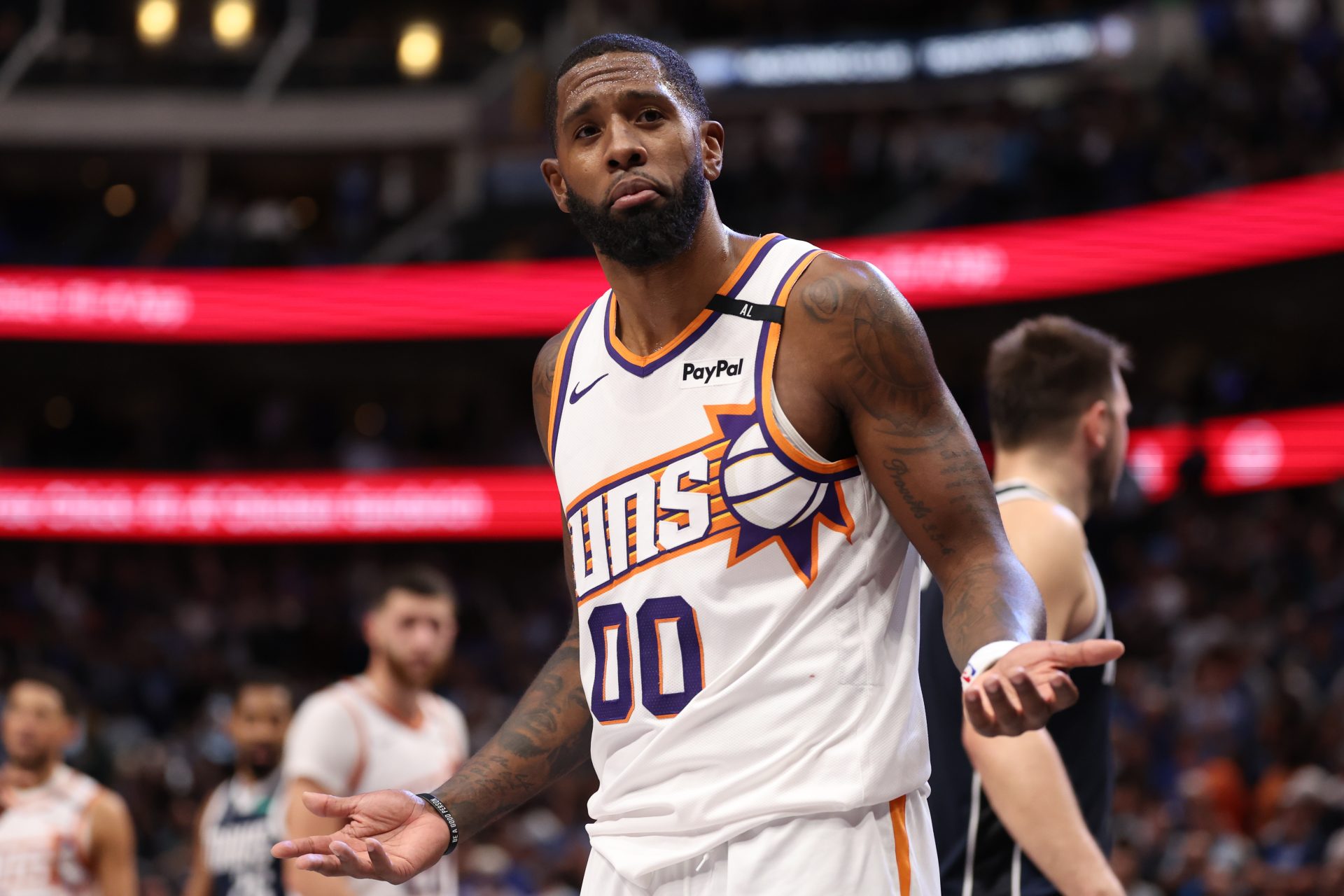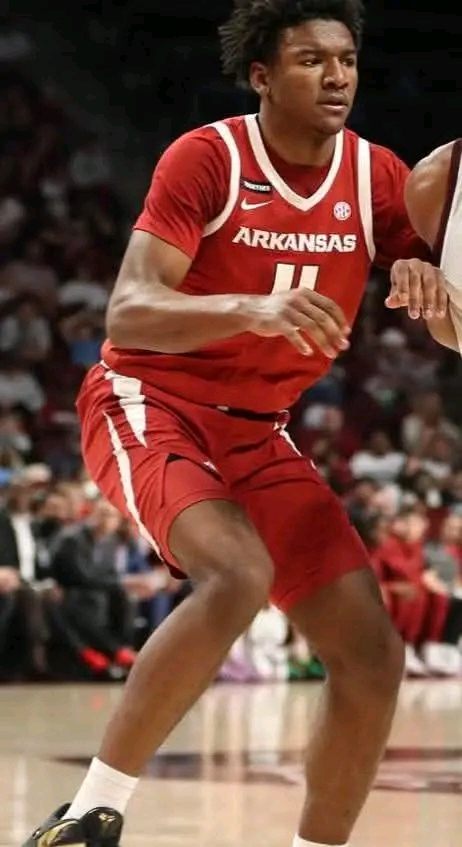The Phoenix Suns have once again found themselves on the losing end of trade negotiations, this time involving rising Golden State Warriors star Jonathan Kuminga. Despite a determined effort and a package centered around veteran forward Royce O’Neale, the Suns were unsuccessful in their pursuit. The main reason for the rejection? A lack of appealing draft capital and an offer the Warriors simply didn’t find compelling enough.
The Suns, currently operating under serious constraints due to past trades that left their draft cupboard nearly empty, tried to engineer a deal to acquire the disgruntled Kuminga. According to NBA insider Marc J. Spears of Andscape, who discussed the situation during an appearance on ESPN’s NBA Today on July 30, the Warriors were not swayed by what Phoenix had to offer.
Phoenix’s proposed package reportedly included Royce O’Neale, center Nick Richards, and four second-round draft picks. However, Spears made it clear that the Warriors weren’t impressed. “That’s just not pretty enough,” he said, summing up Golden State’s view of the deal.
Why the Suns Wanted Kuminga
The Suns have been actively seeking ways to bolster their roster, particularly with youth and athleticism. Jonathan Kuminga, a 6-foot-7 forward with strong two-way potential, fits that mold perfectly. At just 22 years old, Kuminga has already shown flashes of brilliance in Golden State, but his role has been inconsistent, and he has reportedly grown frustrated with his limited minutes and lack of development opportunities under head coach Steve Kerr.
For a team like Phoenix, which is laden with veteran talent including Kevin Durant, Devin Booker, and Bradley Beal, Kuminga could provide a vital spark. He brings energy, explosive athleticism, and the ability to defend multiple positions—exactly the type of player who could flourish in the Suns’ rotation and be groomed as a future core piece.
However, the Suns’ hopes were dashed when the Warriors turned down their proposal, highlighting the challenge Phoenix faces in making high-level trades without future first-round picks to sweeten the pot.
The Suns’ Draft Dilemma
Phoenix is in a tricky spot when it comes to asset management. Over the past few years, the Suns have been aggressive in building a win-now team, which has cost them heavily in terms of draft flexibility. Due to previous trades, they currently have no control over their own first-round picks until 2031. This restriction severely limits their ability to offer future upside to potential trade partners.
In this case, while they reportedly put together an offer that included four second-round picks, the value just wasn’t high enough. Compounding the problem is the fact that Phoenix only has three second-rounders they can actually trade—raising questions about the accuracy or feasibility of their reported offer. Even so, second-round picks generally hold far less weight in trade discussions, especially when targeting young players with star potential like Kuminga.
Royce O’Neale and Nick Richards: Solid, But Not Splashy
Royce O’Neale is a respected NBA veteran known for his perimeter defense, three-point shooting, and locker room leadership. He was brought in by Phoenix to add depth and defensive tenacity on the wing. While he’s a valuable piece for any playoff contender, he’s not a franchise-altering asset. His inclusion in the package signals the Suns’ intent to move forward with youth, but it also underscores the limitations of their offering.
Nick Richards, a 7-foot center previously with the Charlotte Hornets, was also part of the deal. While Richards has shown some promise as a rim protector and rebounder, he remains a relatively unproven commodity in the NBA. Together, O’Neale and Richards bring rotational value, but not the kind of upside that would sway a team like the Warriors away from keeping a 22-year-old with star potential.
Golden State’s Perspective
From the Warriors’ point of view, moving Kuminga would require a significant return. Despite his frustrations and uneven role in recent seasons, Kuminga remains one of the team’s most intriguing long-term assets. He has improved steadily and shown flashes of becoming a dynamic player. Given their aging core of Stephen Curry, Klay Thompson, and Draymond Green, Golden State knows it must begin transitioning toward a younger nucleus, and Kuminga is central to that plan.
In that context, it’s easy to see why they turned down Phoenix’s offer. Trading a young potential star for a couple of role players and second-round picks doesn’t align with their internal strategy—even if Kuminga is unhappy.
The Bigger Picture for Phoenix
This failed trade effort is just the latest chapter in Phoenix’s ongoing attempt to upgrade around their current core. Since acquiring Kevin Durant in a blockbuster deal in 2023, the Suns have gone all-in on chasing a championship. They followed that move by trading for Bradley Beal, leaving them with a top-heavy roster and few remaining assets.
The lack of flexibility is beginning to show. Without valuable draft picks or young, high-upside players to dangle in trades, the Suns have few pathways left to make significant improvements. Their bench remains thin, and their defensive depth is questionable—two areas Kuminga could have helped address.
Team president James Jones and new head coach Mike Budenholzer will now have to look elsewhere as they continue building out the roster. The goal is clear: maximize the championship window while Durant, Booker, and Beal are still at their peak. But that mission becomes harder without the ammunition to make trades like this one happen.
What’s Next?
With the Warriors rejecting their latest proposal, the Suns may have to shift their focus toward smaller, incremental moves or rely on player development to fill the gaps. Players like Bol Bol, Nassir Little, and Grayson Allen could see larger roles, while Phoenix also hopes new acquisitions like O’Neale and Richards can have a bigger impact than anticipated.
As for Kuminga, his future in Golden State remains a story to watch. If his frustrations grow and the Warriors eventually decide to part ways, teams with better assets than Phoenix are likely to jump ahead in line. For now, the Suns will have to regroup and explore other avenues to stay competitive in a fiercely contested Western Conference.
Conclusion
The Phoenix Suns’ attempt to land Jonathan Kuminga highlighted the team’s aggressive pursuit of talent and willingness to make bold moves. However, their lack of draft capital and limited trade assets continue to be a significant hurdle. Offering Royce O’Neale, Nick Richards, and second-round picks was not enough to convince the Golden State Warriors, who still see Kuminga as a key piece of their future. As a result, the Suns are left searching for alternative ways to improve and keep their championship hopes alive.



